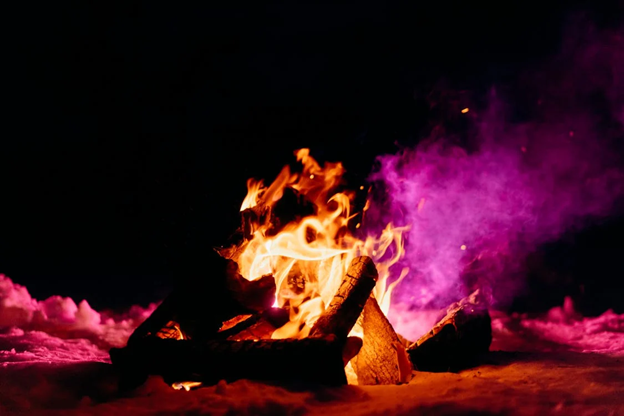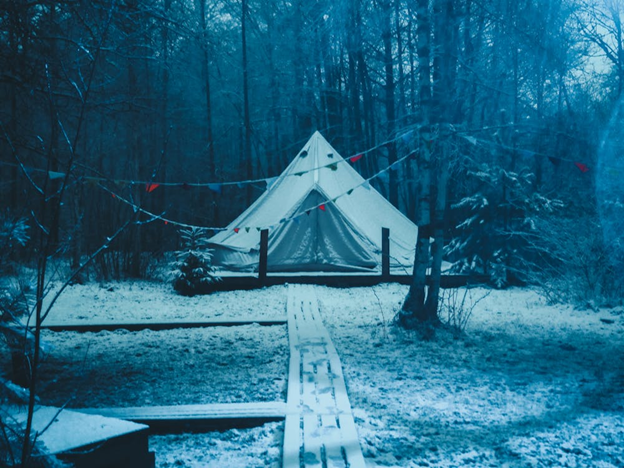Winter survival can be a daunting challenge, especially when the elements are harsh and the landscape is covered in deep snow. One of the most critical skills in such conditions is the ability to construct a proper shelter that will keep you warm and protected. This article will guide you through the process of building a survival shelter in the snow, ensuring you are well-prepared for any winter bushcraft adventure.
Why Is a Shelter Important in Winter?
In winter, the cold can quickly become life-threatening, especially when exposed to wind, snow, and freezing temperatures. A survival shelter serves several purposes:
- Thermal insulation. It helps keep your body warm by blocking out cold winds and insulating against the freezing ground.
- Protection from the elements. Snowstorms, rain, and wind can leave you vulnerable if you don’t have proper shelter.
- Psychological comfort. Being able to build a shelter provides a sense of security, which is crucial in a survival situation.
A good shelter is vital for survival in any outdoor scenario, but it becomes even more important when snow and low temperatures are involved.
What Type of Shelter Should You Build?
Several shelter types can be effective in snowy conditions. The choice of shelter will depend on available resources, the severity of the weather, and your skill level.
- Snow Cave.
A snow cave is one of the most efficient shelters in deep snow, offering excellent insulation from the cold. The thick snow around you naturally insulates the shelter, keeping the inside relatively warm.
How to build a snow cave:
- Choose a location. Look for a location with deep snow, such as a snowbank.
- Dig the entrance. Start by digging into the snow at an angle, ensuring the entrance is at a low point to minimize wind exposure.
- Hollow the interior. Dig the interior space large enough for you to fit comfortably, ensuring you have room to lie down. Create a ceiling that is at least a few feet thick to avoid collapse.
- Create ventilation. Make a small hole in the ceiling to allow fresh air to circulate.
- Smooth the floor. Level the floor to make your sleeping surface as comfortable as possible.
- Quinzee Hut.
The Quinzee hut is similar to a snow cave, but it’s built by piling up snow and then hollowing it out. It’s a more durable option than a snow cave and can withstand stronger winds.
How to build a Quinzee hut:
- Pile snow. Create a large pile of snow, ideally at least 4-5 feet high. Use a shovel or your hands to shape it into a dome.
- Let it settle. Leave the snow pile to settle for about 1-2 hours, allowing the snow to harden.
- Carve the interior. Once the snow has compacted, carefully dig out the interior, ensuring the walls are thick enough to insulate the space. Leave a small entrance at the bottom.
- Ventilation. Punch a small hole near the top to prevent carbon dioxide buildup.
- Tarp and Snow Shelter.
If you don’t have the time or resources to dig into the snow, a tarp shelter can also be effective. It involves using a tarp, rope, and nearby trees to create a makeshift shelter.
How to build a tarp shelter:
- Find trees for support. Look for two or more strong trees about 6-8 feet apart.
- Set up the tarp. Stretch the tarp tightly between the trees to form a roof, using rope to secure it.
- Snow wall. Pile snow around the sides of the tarp to insulate it and block the wind.
- Floor insulation. Layer the floor with leaves, branches, or a thick bed of snow to provide insulation from the cold ground.
What Tools Do You Need?
While it's possible to build shelters without many tools, having the right equipment will make the process easier and faster.
Essential tools:
- Shovels. A small shovel will help you dig into the snow for caves or Quinzee huts.
- Bushcraft axes or saws. It is useful for cutting branches if you need extra materials for insulation or constructing a frame.
- Ropes or paracords. To tie tarps or create structural elements in a shelter.
- Knives. For cutting branches, creating tinder, or performing other detailed tasks.
- Snowshoes. If you’re walking through deep snow, snowshoes can help you move more efficiently.
Safety Considerations When Building a Snow Shelter
Building a shelter in snow requires careful attention to safety. Snow can shift or collapse, and exposure to extreme cold can lead to hypothermia. Here are some safety tips:
- Avoid avalanche-prone areas. If you’re building a shelter in mountainous areas, look for flat or gently sloping terrain instead.
- Ventilation is key. Ensure there is adequate ventilation to avoid suffocation, especially in snow caves or Quinzee huts.
- Don’t build directly on ice. Avoid building your shelter directly on a frozen lake or river, as the ice may not be thick enough to support you.
- Stay dry. Wet clothing can lead to hypothermia. Always keep your shelter dry and avoid touching wet snow when building.
How Do You Stay Warm Inside the Shelter?

Once your shelter is built, staying warm is crucial. While the snow will insulate your shelter, you still need to take steps to ensure your body stays warm:
- Layer your clothing. Wear multiple layers, especially moisture-wicking base layers to prevent sweat from cooling you down.
- Create a sleeping platform. Insulate your sleeping area from the cold ground by adding leaves, pine boughs, or extra snow to create a raised bed.
- Use a fire. If it's safe to do so, you can light a small fire outside your shelter and use a fire reflector to direct heat into your shelter. Be careful not to start a wildfire or cause smoke buildup inside your shelter.
- Stay close together. If you're with others, huddle together to share body heat.
Why Is It Important to Practice Shelter Building?
While it’s essential to know how to build a shelter in an emergency, practicing before you need to can make a big difference. Knowing and applying these tips can save valuable time when you’re in a survival situation:
- Practice building a winter survival shelter when camping with your gear first, or take a local class that focuses on wilderness training.
- Practicing with real snow conditions allows you to troubleshoot any issues with your technique or tools before you’re in a life-or-death situation.
- Research the terrain of the area you will be in, and make sure to bring the essentials, such as water, ropes, a flashlight, and a pocket knife.
Conclusion
Building a survival shelter in snow is one of the most important skills for winter bushcraft. Whether you choose a snow cave, Quinzee hut, or tarp shelter, knowing how to create a safe, insulated space can mean the difference between life and death in cold, snowy conditions. Always remember to practice in safe conditions, use the proper tools, and keep safety at the forefront of your mind. With these skills in your arsenal, you’ll be better equipped to face the challenges of winter wilderness survival.






